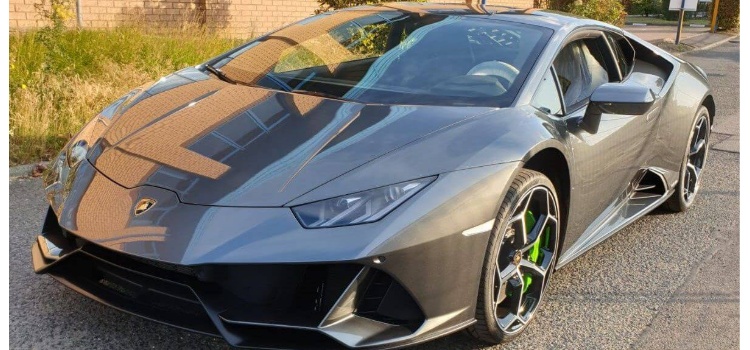
Ferruccio Lamborghini

Lamborghini became one of the most legendary car brands in the world?
Well, it all started with Ferruccio Lamborghini, an Italian mechanic who grew up in poverty during World War II.
He began his career building tractors and eventually founded his own company, Lamborghini & C., which would one day become synonymous with high-performance sports cars.
Ferruccio's vision was not just to build fast cars, but to create machines that were a symphony of power, design, and innovation. He was driven by a passion for mechanics and engineering, which led him to challenge the status quo in the automotive world. Lamborghini's early designs were like nothing else on the road at the time - sleek, powerful, and built with precision.
Understanding Ferruccio Lamborghini's story is more than just learning about a car brand; it's about witnessing how one person turned their dreams into reality. His legacy serves as an inspiration to anyone who has ever dared to dream big.
Innovation and Reinvention after World War II
World War II was a turning point in world history. It marked the end of an era and the beginning of new opportunities for growth, innovation, and reinvention.
The war destroyed much of Europe's cities but left intact some hidden skills that were fostered during those difficult years.
This is because many people who lost their homes found creative ways to adapt to a tough situation. They used this adversity as an opportunity for innovation and creativity.
After the war, scientists like Fritz Haber turned his expertise into creating better airbags which saved countless lives during accidents.
And engineers worked on building efficient machines that helped Europe recover faster from the damage they suffered. The new materials developed in those years gave life to a whole range of applications.
The world's economy was also reinvented through innovative solutions like the Marshall Plan, which enabled war-torn countries to get back on their feet.
New economic and financial strategies came into being with the post-war period as well. New techniques for urban development were invented using cutting-edge technology such as a pre-fabricated modular buildings developed in Sweden.
In conclusion, war may bring about adversity but also inspires innovation and creativity by creating an opportunity to try out new ideas or concepts that wouldn't have been thought of otherwise.
Building a Better Future through Italian Engineering
When we think about building a better future, Italian engineering might not be the first thing that comes to mind. But what if I told you that Italy has been at the forefront of innovation for centuries?
The Renaissance is arguably one of the most influential periods in art and culture history where artists began working together on innovative ideas which inspired great masterpieces.
For instance, Leonardo da Vinci made inventions such as machines used to lift heavy weights or fly. He also designed flying devices that were hundreds of years ahead of his time.
Leonardo's ability to turn the old into something new paved the way for other innovative Italians like Alessandro Volta, who discovered how electricity works and invented the first electrical battery.
Another example is Michelangelo's creative engineering when he sculpted David from a single piece of marble. He changed art history with his incredible sculptures that gave us an entirely different perspective on beauty in art.
Michelangelo also made significant advances in painting by experimenting with new techniques to create the famous work, "The Sistine Chapel ceiling".
So if we want a better future, we must be willing to build on what has come before. By embracing innovation and creativity through history like Italy's rich cultural heritage, anything is possible in building an even more improved tomorrow.
Creating the Iconic Supercar of Tomorrow
The road to creating an iconic supercar is long, it requires perseverance. You'll have to work with a team, who can withstand pressure at times. In the face of obstacles and adversity.
Building such a car will require collaboration across multiple disciplines: design engineers, mechanical engineers, materials scientists - all working together in harmony.
When faced with challenges we should always start by thinking outside the box.
Here are 3 things you need to do...
Think creatively about innovative materials. Imagine using lightweight advanced composites that can save weight while improving strength and durability. Then think of new shapes, aerodynamic lines, or sculpted forms for improved efficiency.
Aerodynamics is an often-neglected area but it makes all the difference between success and failure when designing a supercar.
Use cutting-edge electronics to enhance performance: The modern era is dominated by electric vehicles. A supercar of tomorrow should push boundaries with its onboard technology as well, giving drivers enhanced handling through advanced driver assistance systems (ADAS). With these tools we can better interact between road and vehicle.
Use real data to design the driving experience: The interior should be a sanctuary that connects occupants with an immersive sensory journey. Advanced sensors in seats detect vital signs of passengers while AI-powered voice s learn about user preferences, letting you focus on your drive.
These three components work together seamlessly and give rise to iconic supercars like Tesla Roadster
The Birth of a Luxury Brand - Lamborghini's First Vehicles
When Ferruccio Lamborghini founded his company in Italy back in the fifties. The factory began with a humble beginning, building tractors from the farm's shed.
Lamborghini's first cars were made to be road vehicles but they were initially built for racing purposes. It wasn't until after World War 2 that Lamborghini started making cars in earnest. Their early car line up was primarily produced out of a humble garage with manual labour and tools on the factory floor.
The company's history goes back all the way to before world war two when Ferruccio, who made tractors for a living but had always been passionate about motorcycles, began taking apart parts from destroyed planes after World War II. This is how he came up with idea of building his own cars.
The first Lamborghini model was called the "350 GT." It had an engine that made one hundred sixty horsepower and could hit a speed of around two-forty.
This vehicle's beauty, which I see in pictures on some websites. is what people remember when they hear the name "Lamborghini" today. The company went to town in developing car after car.
Each one more beautiful than before and had better performance as well - that said for a long time Lamborghini's first models struggled with reliability problems, mainly because of poor quality components used on them.
Then came the Miura which was introduced in '63. The V12 powered car did an incredible hundred miles per hour when fully assembled and had some sleek designs that stunned people everywhere it went.
Lamborghini's First Production Model
Lamborghini's history is closely tied to its early days as a tractor manufacturer. When founder Ferruccio Lamborghini had problems with the poor quality of vehicles produced by established car manufacturers, he decided to build his own. The company started out building tractors because Lamborghini was frustrated with the performance and reliability issues he experienced in these types of machinery.
This lacklustre experience pushed him to begin manufacturing high-quality farm equipment which would be reliable. He focused on precision engineering to create a tractor that could withstand heavy use without breaking down as much as other models were prone to.
The Lamborghini company began producing tractors in 1948, and they quickly gained popularity for their reliability.
This helped the company establish itself before shifting production entirely towards vehicles. This is where we see the roots of a business that will one day go on to become famous for luxury cars. When Lamborghini started building sports cars he took his precision engineering skills into an industry with different requirements than farm equipment but still very much in line with his core values and attention to detail.
Lamborghini's first production car, the Miura is released. It was a massive departure from anything else on the market at that time due to its design and innovative technologies such as mid-mounted V12 engines
Vignale and Miura Set Design Standards Forever
It's been over 60 years since Lamborghini first started creating some amazing supercars. Two models stand out, setting the tone for all that came next: Vignale and Miura. The V12-powered cars from this period helped establish what was to come in future automotive history.
The 1967 Lamborghini Marzal Concept introduced some radical new ideas like a transparent hood, giving people an unprecedented view into the engine's operation. This vehicle is said to have set the tone for supercar design moving forward.
Although not produced due to high production costs and financial struggles, it laid out what might be considered the foundation of modern Lamborghini style which continues on in newer models such as Aventador.
The Miura's sleek lines created a look that is still used today by many supercar brands. This car set up speed records at the time and made history with its performance, showing what it meant to build an exotic high-performance vehicle.
It remains one of the most iconic cars ever built from Lamborghini, even after all these years this automobile has left a lasting impact on how we envision our sports cars today.
Legacy of the Iconic Italian Automaker
A legacy is born from the unrelenting passion and innovative spirit of visionaries who refuse to accept mediocrity.
From humble beginnings, Ferruccio Lamborghini's tireless pursuit of perfection propelled his company into an era marked by bold designs and precision engineering. Every supercar created tells a story of unwavering dedication, as each vehicle not only represents but also celebrates human ingenuity at its finest.
The success stories behind these iconic vehicles remind us that ground breaking achievements often stem from embracing the unconventional and pushing boundaries. As an entrepreneur or enthusiast, reflecting on Lamborghini's legacy can inspire creativity in tackling challenges head-on and investing time and energy into overcoming obstacles.
